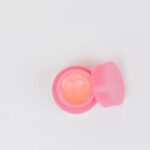Diode laser hair removal is a popular and effective method for achieving long-term hair reduction. This technology utilizes a specific wavelength of light that targets the melanin in hair follicles, making it particularly effective for individuals with darker hair and lighter skin tones. The diode laser operates at a wavelength of around 800-810 nanometers, which allows for deeper penetration into the skin while minimizing damage to the surrounding tissues.
This precision is one of the reasons why diode lasers have gained traction in both clinical and aesthetic settings. The diode laser system is designed to deliver energy in a controlled manner, ensuring that the hair follicles are heated sufficiently to inhibit future hair growth without causing discomfort or harm to the skin. Unlike traditional methods such as shaving or waxing, which only provide temporary results, diode laser hair removal offers a more permanent solution.
As a result, many individuals are turning to this method as a long-term investment in their grooming routines, seeking not only convenience but also the confidence that comes with smooth, hair-free skin.
Key Takeaways
- Diode laser hair removal is a popular method for long-term hair reduction that uses concentrated light to target and destroy hair follicles.
- The diode laser works by emitting a specific wavelength of light that is absorbed by the melanin in the hair follicle, heating and damaging it to inhibit future hair growth.
- The benefits of diode laser hair removal include long-lasting results, minimal discomfort, and the ability to treat large areas of the body.
- Compared to other hair removal methods, diode laser hair removal offers a more permanent solution with fewer side effects and a lower risk of ingrown hairs.
- Diode laser hair removal is generally safe and effective for individuals with light to medium skin tones and dark hair, but it may not be suitable for everyone and requires proper aftercare and maintenance. It is important to find a qualified professional with experience in diode laser hair removal for the best results.
How Diode Laser Hair Removal Works
The mechanism behind diode laser hair removal is rooted in the principles of selective photothermolysis. This process involves the absorption of light by specific chromophores—in this case, the melanin in hair follicles. When the diode laser emits light, it is absorbed by the pigment in the hair, converting it into heat.
This heat then damages the follicle, disrupting its ability to produce new hair. The treatment is most effective during the anagen phase of hair growth, when the hair is actively growing and contains the most melanin. During a typical session, the area to be treated is first cleansed and may be shaved to ensure that the laser energy is focused on the follicles rather than on surface hair.
A cooling mechanism is often employed to protect the skin and enhance comfort during the procedure. The practitioner will then use a handheld device to deliver laser pulses across the treatment area. Each pulse lasts only a fraction of a second, allowing for quick treatment times even for larger areas like the legs or back.
Patients may experience a sensation similar to a rubber band snapping against the skin, but this discomfort is generally minimal and short-lived.
The Benefits of Diode Laser Hair Removal

One of the primary advantages of diode laser hair removal is its efficiency in delivering long-lasting results. Many patients report a significant reduction in hair growth after just a few sessions, with optimal results typically achieved after six to eight treatments spaced several weeks apart. This long-term efficacy not only saves time but also reduces the need for frequent grooming, making it an appealing option for those with busy lifestyles.
In addition to its effectiveness, diode laser hair removal is known for its versatility. It can be used on various body parts, including sensitive areas such as the face, underarms, and bikini line. The technology has also evolved to accommodate different skin types and hair colors, making it accessible to a broader range of individuals.
Furthermore, diode lasers are equipped with advanced cooling systems that enhance patient comfort during treatment, minimizing side effects such as redness or swelling.
Comparing Diode Laser Hair Removal to Other Methods
| Method | Effectiveness | Pain Level | Cost |
|---|---|---|---|
| Diode Laser Hair Removal | High | Mild discomfort | Medium to high |
| Waxing | High | Moderate to high | Low to medium |
| Shaving | Low | Low | Low |
| Electrolysis | High | High | High |
When comparing diode laser hair removal to other hair removal methods, several key differences emerge. Traditional methods like shaving and waxing are often time-consuming and require regular maintenance. Shaving can lead to issues such as razor burn or ingrown hairs, while waxing can be painful and may not be suitable for all skin types.
In contrast, diode laser hair removal offers a more permanent solution by targeting the root of the problem—the hair follicle itself. Electrolysis is another common method of hair removal that involves using an electric current to destroy individual hair follicles. While electrolysis can be effective for small areas and all hair colors, it is often more time-consuming and can be uncomfortable due to the nature of the treatment.
Diode laser hair removal stands out for its speed and ability to treat larger areas efficiently, making it a preferred choice for many seeking comprehensive hair reduction solutions.
Safety and Effectiveness of Diode Laser Hair Removal
Safety is a paramount concern when it comes to any cosmetic procedure, and diode laser hair removal is no exception. The technology has been extensively studied and is considered safe when performed by qualified professionals. Side effects are generally mild and temporary, including redness or slight swelling in the treated area.
These effects typically resolve within a few hours to a couple of days post-treatment.
Clinical studies have demonstrated that patients can achieve up to 80% reduction in hair growth after completing a series of treatments.
Factors such as hair color, skin type, and hormonal influences can affect individual results; however, advancements in technology have made diode lasers adaptable to various skin tones and types of hair. This adaptability enhances its effectiveness across diverse populations.
Who Can Benefit from Diode Laser Hair Removal

Effective for a Range of Skin Tones
Advances in technology have made it possible for individuals with darker skin tones to benefit from diode laser hair removal. Specialized settings minimize the risks associated with pigmentation, making this treatment accessible to a broader range of individuals.
Beneficial for Specific Conditions
Individuals with conditions such as polycystic ovary syndrome (PCOS), which can lead to excessive hair growth due to hormonal imbalances, may find diode laser hair removal particularly beneficial. By targeting unwanted hair growth effectively, this method can help improve self-esteem and body image for those affected by such conditions.
Convenient for Active Lifestyles
Athletes or individuals who engage in activities where smooth skin is preferred may find diode laser treatments advantageous for maintaining their grooming routines. This treatment provides a convenient and long-term solution for those who value smooth, hair-free skin.
Aftercare and Maintenance for Diode Laser Hair Removal
Post-treatment care is essential for maximizing results and ensuring skin health following diode laser hair removal sessions.
Sunscreen with a high SPF should be applied diligently if sun exposure cannot be avoided.
Additionally, it is recommended that patients refrain from using harsh skincare products or engaging in activities that may irritate the skin, such as hot baths or vigorous exercise, for a few days following treatment. Hydration is also crucial; keeping the skin moisturized can aid in recovery and enhance overall results. Regular follow-up sessions may be necessary depending on individual growth patterns; maintenance treatments every six months or annually can help sustain optimal results over time.
Finding a Qualified Professional for Diode Laser Hair Removal
Selecting a qualified professional for diode laser hair removal is critical to ensuring safety and effectiveness during treatment. Prospective patients should seek practitioners who are licensed and experienced in performing laser treatments specifically. It is advisable to look for certifications from recognized organizations that specialize in aesthetic procedures.
Consultations are an excellent opportunity to assess a practitioner’s expertise and discuss individual needs and concerns. During these consultations, patients should inquire about the types of lasers used, their experience with different skin types, and any potential risks associated with treatment. Reading reviews or seeking recommendations from previous clients can also provide valuable insights into a practitioner’s reputation and success rates.
In conclusion, diode laser hair removal represents a significant advancement in cosmetic technology aimed at providing long-lasting solutions for unwanted hair. Its effectiveness, safety profile, and versatility make it an appealing choice for many individuals seeking smoother skin without the hassle of traditional methods. As with any cosmetic procedure, thorough research and careful selection of qualified professionals are essential steps toward achieving desired results while ensuring safety throughout the process.
If you are interested in learning more about the benefits of diode laser hair removal, you may want to check out this article on Fashion Home. This article discusses how diode laser hair removal can provide long-lasting results and is safe for all skin types. It also highlights the convenience of this treatment compared to traditional methods like shaving or waxing. For more information on diode laser hair removal and other related topics, you can visit the Sample Page or review the Privacy Policy on the website.
FAQs
What is diode laser hair removal?
Diode laser hair removal is a cosmetic procedure that uses a concentrated beam of light to remove unwanted hair. The diode laser targets the pigment in the hair follicle, damaging the follicle and inhibiting future hair growth.
How does diode laser hair removal work?
During diode laser hair removal, the diode laser emits a specific wavelength of light that is absorbed by the pigment in the hair follicle. This light energy is converted to heat, which damages the follicle and inhibits future hair growth.
What are the benefits of diode laser hair removal?
Some benefits of diode laser hair removal include long-lasting results, minimal discomfort, and the ability to target large areas of the body. It is also effective for all skin types and can be used on both men and women.
Is diode laser hair removal safe?
When performed by a trained and experienced professional, diode laser hair removal is considered safe. It is important to follow pre- and post-treatment care instructions to minimize the risk of potential side effects.
How many sessions are typically needed for diode laser hair removal?
The number of sessions needed for diode laser hair removal varies depending on the individual’s hair type, skin color, and the area being treated. On average, most people require 6-8 sessions for optimal results.
Are there any side effects of diode laser hair removal?
Some potential side effects of diode laser hair removal may include temporary redness, swelling, and mild discomfort. In rare cases, changes in skin pigmentation or scarring may occur. It is important to discuss potential risks with a qualified practitioner before undergoing treatment.






